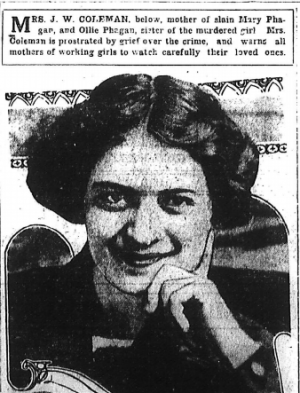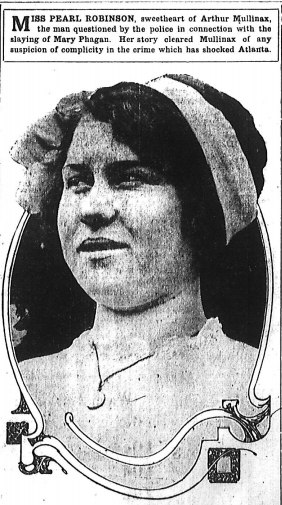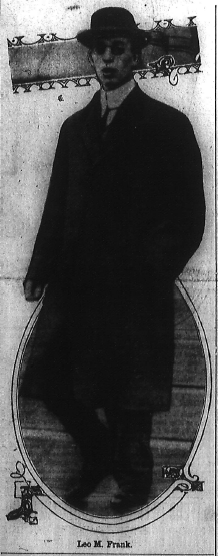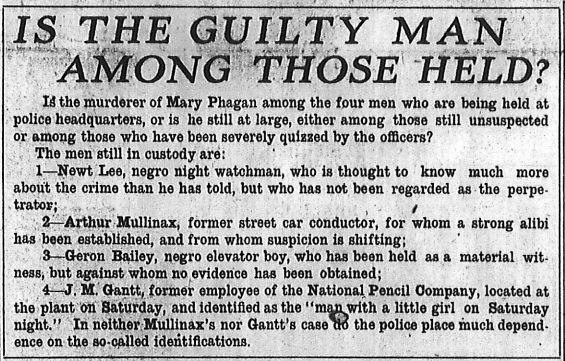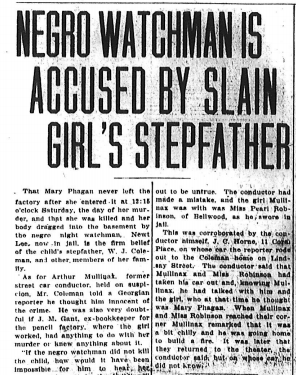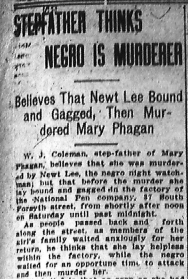 Another in our series of new transcriptions of contemporary articles on the Leo Frank case.
Another in our series of new transcriptions of contemporary articles on the Leo Frank case.
Atlanta Journal
Tuesday, April 29th, 1913
Believes That Newt Lee Bound and Gagged, Then Murdered Mary Phagan
W. J. Coleman, step-father of Mary Phagan, believes that she was murdered by Newt Lee, the negro night watchman, but that before the murder she lay bound and gagged in the factory of the National Pen [sic] company, 37 South Forsyth street, from shortly after noon on Saturday until past midnight.
As people passed back and forth along the street, as members of the girl’s family waited anxiously for her return, he thinks that she lay helpless within the factory, while the negro waited for an opportune time to attack and then murder her.
His belief is that as soon as she had been paid the wages that she went to the factory to collect, she passed into the dressing room, perhaps for a drink of water. There, in his opinion, the negro seized the girl and bound and gagged her. He says there is plain evidence in the dressing room that the girl was first attacked there. Continue Reading →


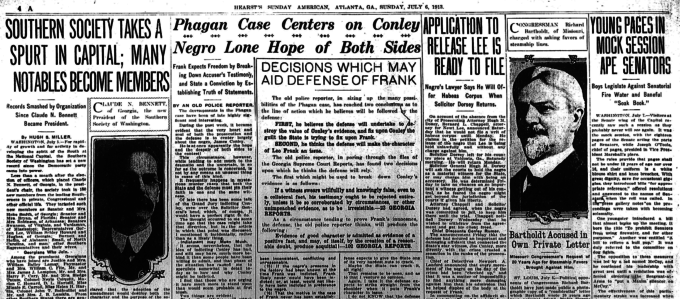 Another in
Another in 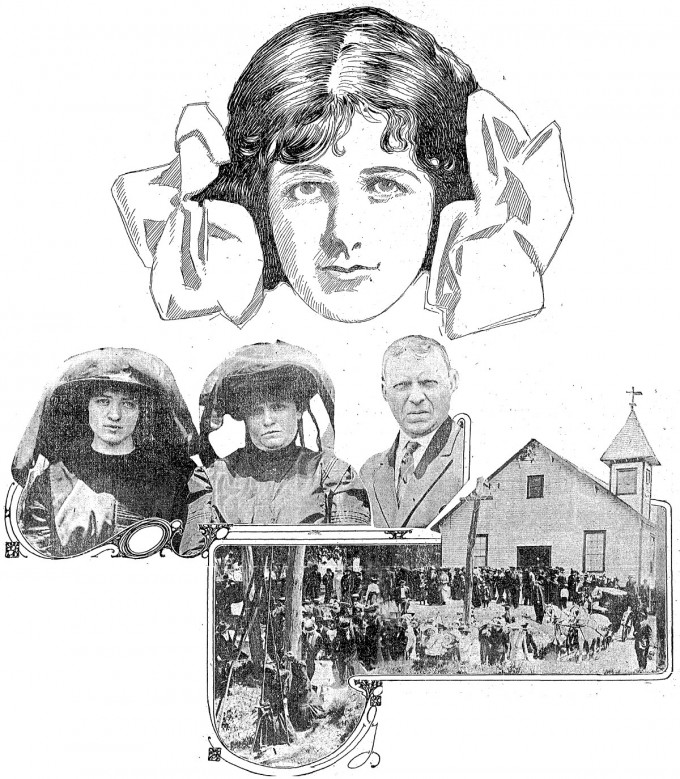

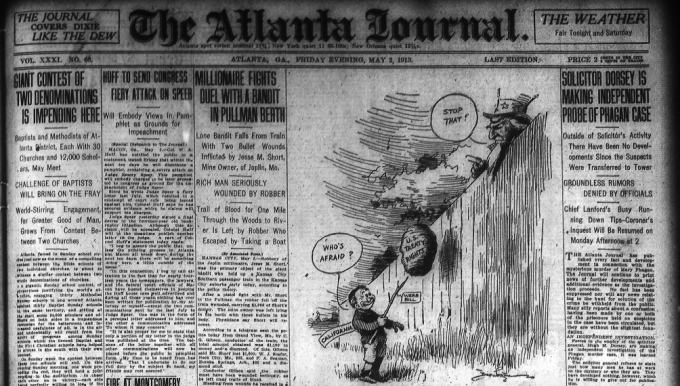
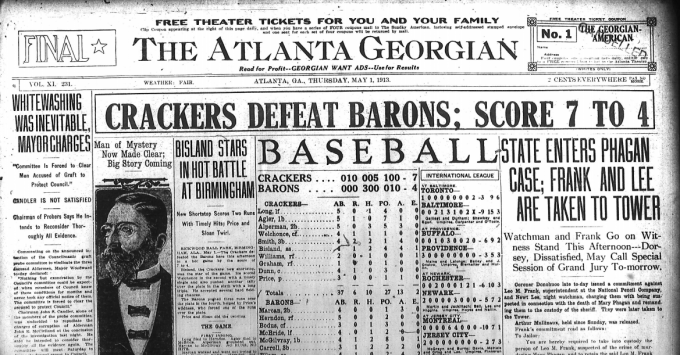
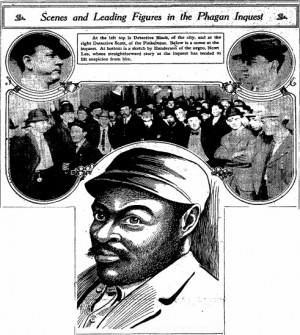
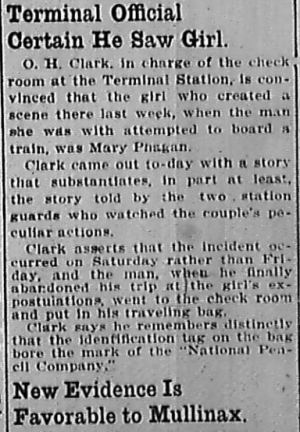
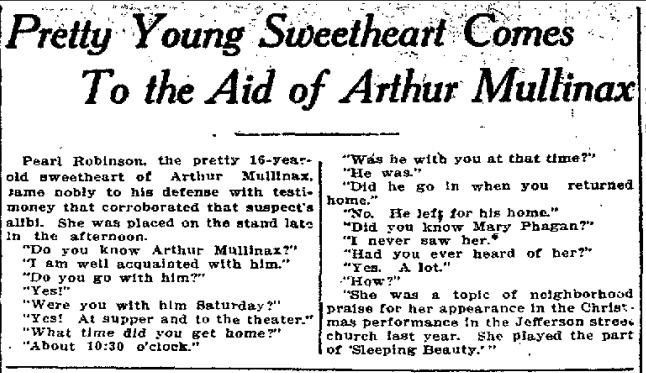
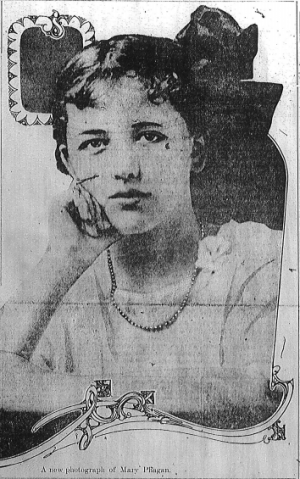
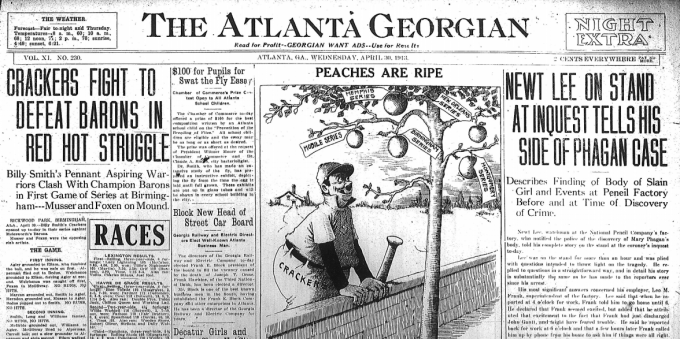
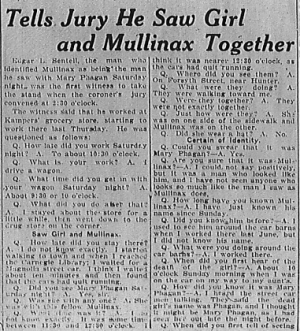
![Gantt reading murder warrant [John M. Gantt was a family friend of Mary Phagan's and was accused of being "infatuated" with the young girl. He was let into the factory on Saturday to retrieve pairs of shoes he had left there prior to his leaving the company. Newt Lee accompanied him as he retrieved his shoes and left Saturday afternoon -- Ed.]](https://www.leofrank.org/wp-content/uploads/2016/02/Factory-Employe-May-Be-Taken-Any-Moment-300x483.png)
